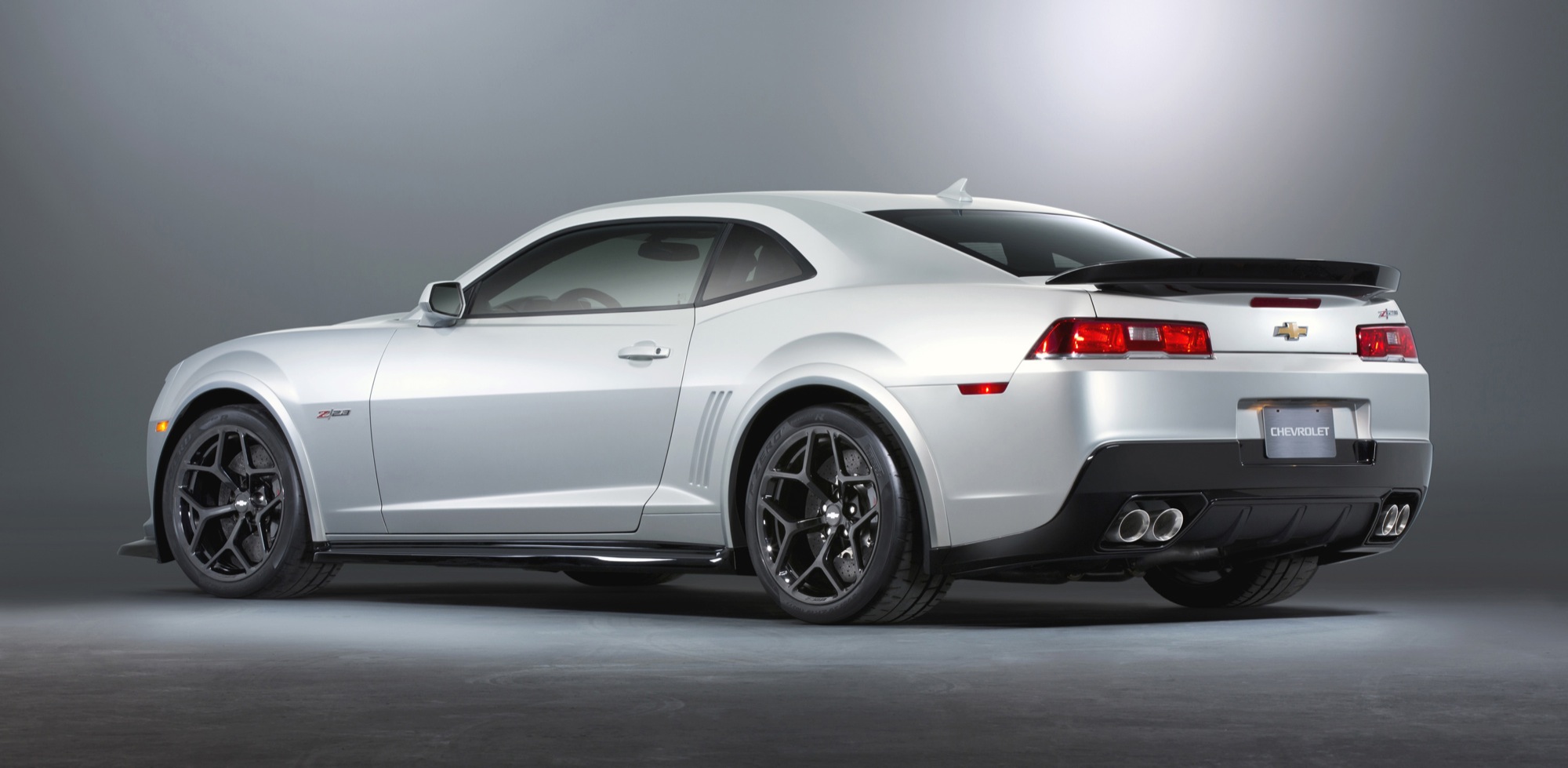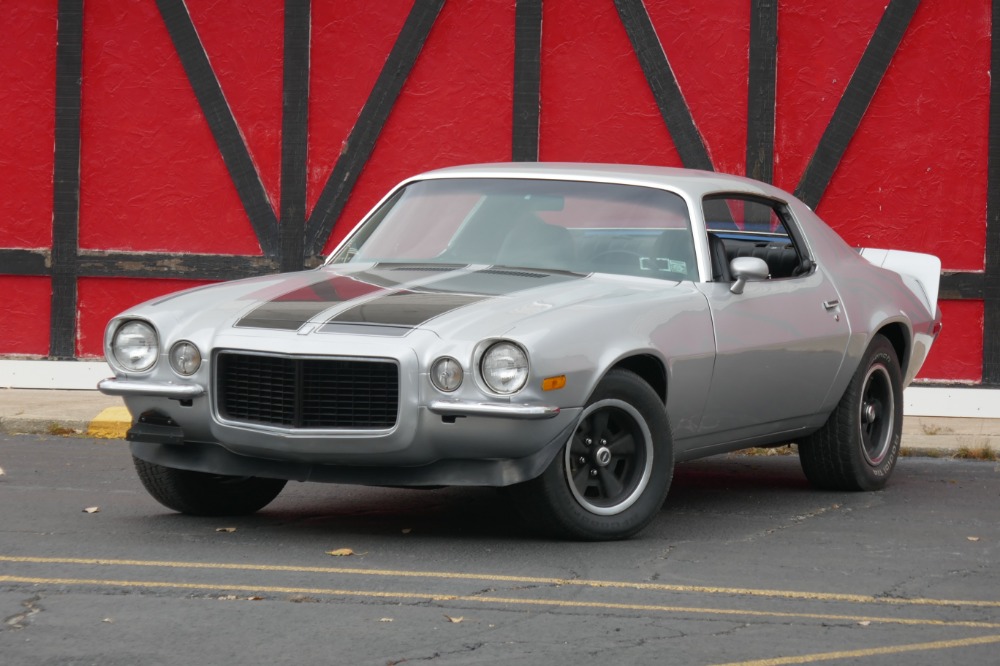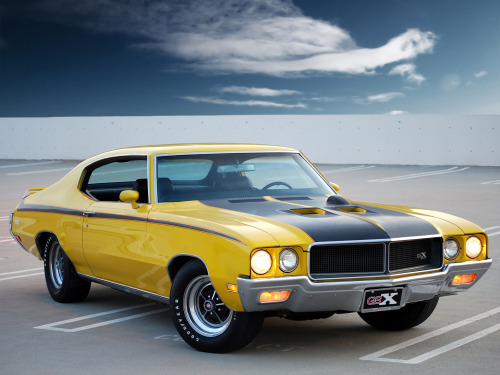 Al Oppenheiser, Vehicle Chief Engineer for the Chevrolet Camaro has took a few minutes to answer some question with LSXTV and Chevy Hardcore, about the thought process behind the all new road race ready 2014 Z/28? There is a lot of questions that have been asked in the past few years about the Camaro like: why a ZL-1 or a 1LE instead of the Z/28. Why the choice of the 426 naturally aspired engine instead of the supercharged LS7, 7.0 liter for the Z/28. Well here is Oppenheiser on some of those question and others like aerodynamics, weight reducing, and g-forces.
Al Oppenheiser, Vehicle Chief Engineer for the Chevrolet Camaro has took a few minutes to answer some question with LSXTV and Chevy Hardcore, about the thought process behind the all new road race ready 2014 Z/28? There is a lot of questions that have been asked in the past few years about the Camaro like: why a ZL-1 or a 1LE instead of the Z/28. Why the choice of the 426 naturally aspired engine instead of the supercharged LS7, 7.0 liter for the Z/28. Well here is Oppenheiser on some of those question and others like aerodynamics, weight reducing, and g-forces.
Chevy Hardcore: Tell us about the significance of the new Z/28 to Chevrolet performance
.
Al Oppenheiser: “The most asked questions since we
launched the new car in 2009 were: Where is the Z/28? When are you
coming out with a Z/28? Why didn’t you call the ZL-1 the Z/28? Why
didn’t you call the 1-LE the Z/28? As I have said before, we are never
done with performance. Have faith. We are never done making the car
better, and this was the car that we knew was coming. The car itself had
to be deserving of the historic Z/28 name. This one definitely is
deserving. I’m telling you, this will be a car like no other that you
have ever driven.”
CHC: What are some of the performance
highlights, especially aerodynamics, of the new car that sets the Z/28
apart from all other Camaros?
 AO:
AO:
“If you start with an SS, which is our 426 V-8, we have gone after the
things that make the car go around the track faster – Go, Stop and Turn
are our three mottos. The Go is the naturally aspirated LS-7 plucked
right out of the Corvette. These are hand-built at the Wixom
Performance Build Center and have no shortage of power.
“We also set the team on a mission to put the car on a diet, and have
set a goal to take at least 100 pounds out of the standard SS, which is
more than 300 pounds lighter than a ZL-1. We are not done yet, but we
have already met our goal of removing at least 100 pounds from the car.
We have also done things like added carbon ceramic brakes on 19-inch
305-series tires, front and rear. The overall unsprung mass at each
corner is lighter. We have also down-gauged the thickness of the back
windshield; and we redesigned the rear seat, using lighter weight
materials, instead of removing it.
 |
| Al Openheiser |
We
have also done some things that you should do with a Z/28 track car. We
have taken the air conditioning out of it. You have to order that
special. It does not come with air conditioning standard and it does not
come with an audio system standard.
We’ve got one speaker in the car and the only reason that we have one
speaker in the car is because you need a speaker to have the seat belt
chime audible to the driver. You can option up, if you desire, the air
conditioning and a base radio system. We have been very strategic in
where we have taken mass out of the car.
You mentioned aerodynamics. The car has a unique front splitter,
different from the ZL-1. We have lowered the ride height, so that
specific rocker panels, rear fascia, and rear spoiler in the car – at
some point when we tell you how much, it will knock your socks off how
much down force this car makes.”
CHC: Obviously with the LSA making 580 horsepower, was there a strategy behind picking the normally aspirated LS-7 for the Z/28 versus the already 580 horsepower available in the ZL-1?
AO: “Absolutely, that goes back to the question,
‘Why didn’t you call the ZL-1 a Z/28′? As you know the ZL-1 harkened
back to the ‘69 aluminum block ZL-1 that we did. It had the highest
horsepower that was in a Chevrolet at the time. We thought that a
supercharged aluminum-block, high-horsepower engine was more deserving
of a ZL-1 name, not a historical Z/28 name. So, naturally aspirated and
the 427, it just equates back to what a road racing car should be, and
not to take anything away from the ZL-1, but if it were to stand true to
the Z/28 name, a supercharged engine didn’t belong under the hood.”
 CHC: Speaking again of power-to-weight
ratio as sort of that all-mighty watermark of performance, are there any
other ways that Chevrolet could see shaving weight from the Z/28 in the
future models
CHC: Speaking again of power-to-weight
ratio as sort of that all-mighty watermark of performance, are there any
other ways that Chevrolet could see shaving weight from the Z/28 in the
future models?
AO: “Absolutely, as I mentioned, our goal was 100
pounds and have already exceeded that. We’re approximately a year away
from bringing it into production, so we’re not done yet. We are always
looking for lightweight materials. To give you reference in terms of lap
time, you would have to remove 250 pounds to get another second on the
track and have to weigh that against another tenth of a G in lateral
acceleration. I can get that same second on the track.
So you have to weigh where you are going to get your lap time down and these
P-ZERO Trafeo R
tires are capable of a 1.05 g-max sustained lateral acceleration and
we’ve already seen decel’s of 1.5 g, so we’re getting better lap times
in other ways. But the 100 pounds definitely helps the lap time. We took
significant chunks out as opposed to an ounce here and there, helping
us on the track.”
CHC: One
last question. We thought it was interesting that instead of going with
the magnetic ride such as on, say the ZL-1, you went with not only a
dual adjustable shock but a true racing style four-way adjustable
shock. Is this technology you chose again specifically for the Z/28 or
was it that you really wanted to differentiate the two cars?
AO: “We definitely picked this specifically for this
application. Multimatic is the company we’re working with. They are
well known for their ability to set up dampers for racing vehicles and
we felt that the limitations of the mono-tubes that we’ve got in our
1-LE and, of course, the MR, while it’s awesome on the ZL-1, we didn’t
feel it belonged in a Z/28 so we did go with the adjustable dampers that
are in the Z-28. They’re truly, again, trying to stay with the heritage
of the car. They are track designed specifically for the Z-28.”
CHC: Do you think that soon after the
production launch of the new Z-28 we will see parts and pieces of this
car making its way onto scratch built cars, or in some way a program
that might mimic in some way the COPO program?
AO: “That’s a great question. We’ve had that debate
all the way up through GM President Mark Reuss on whether or not we want
to see clones driving around on the streets, and we’ve made the
decision that since offering performance parts helps sell Camaros, we’ve
got a great performance parts team now under Vice President,
Performance Vehicles and Motorsports Jim Campbell, who is growing that
very dynamic industry.
“You will see Z/28 performance parts available for other Camaros and
you know specifically as far as suspension, drift, and so on, you’re
going to see those parts. Some of the parts are kind of integrated into
the body but we definitely plan on allowing customers to have the
opportunity to get a hold of some Z/28 parts for their car.”
There has been a lot of talk through the last couple of years of when, if, what, Chevrolet's intentions were going to be when it comes to producing a
Camaro with Z/28 badges on it. Now the time has come. The Z/28 will make a statement in 2014, hopefully living up to it's legend.

















